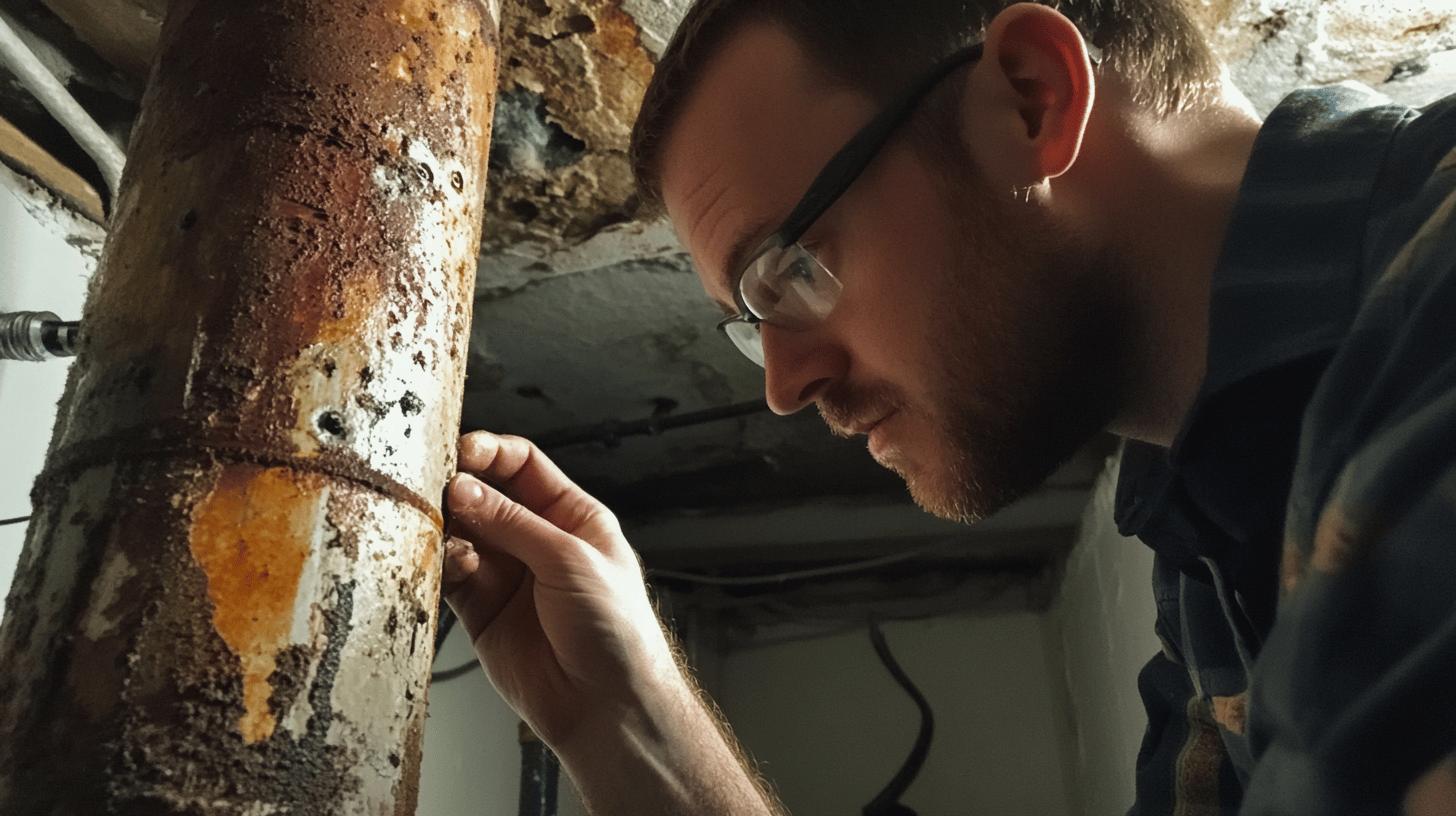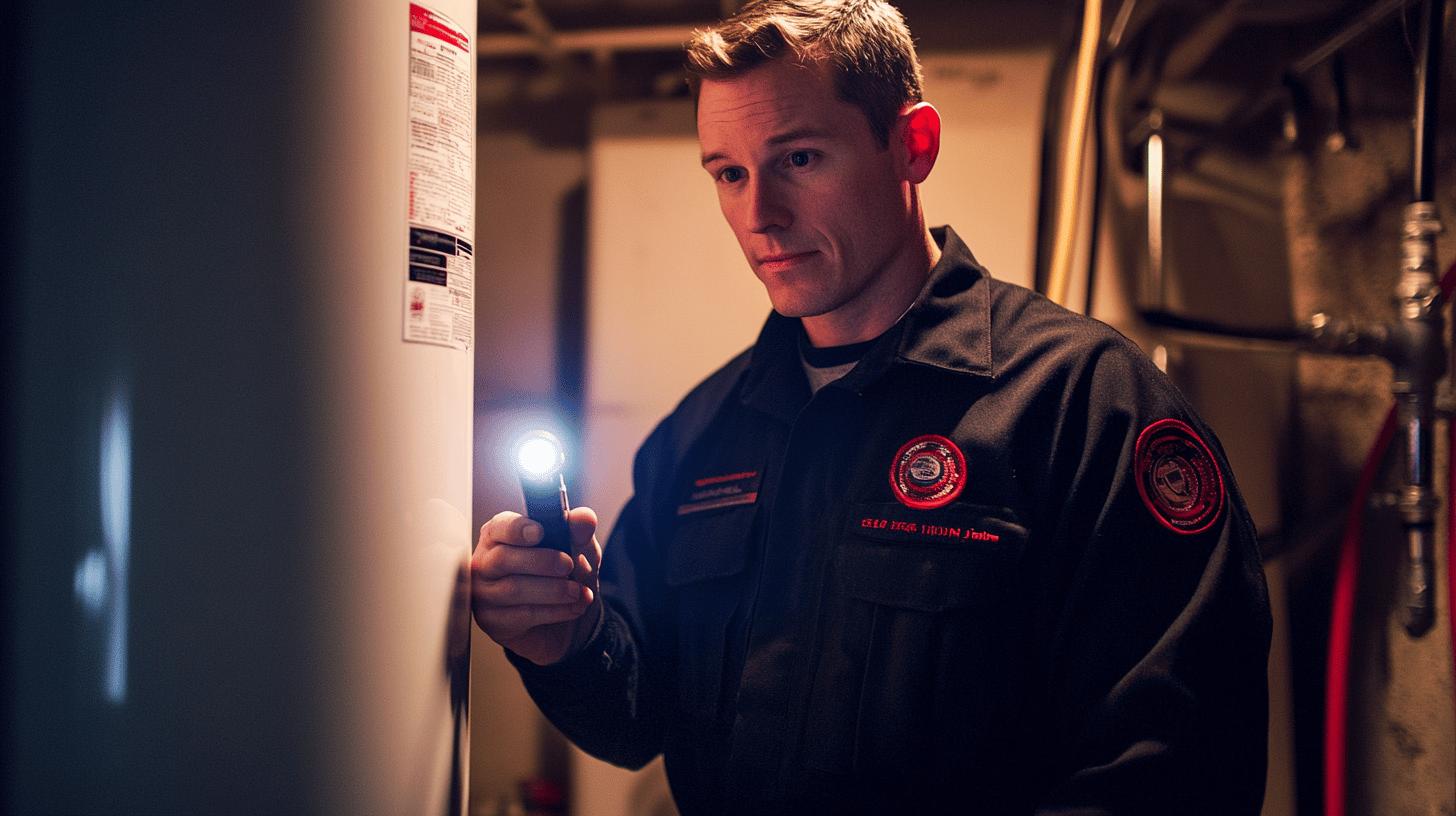TL;DR:
- Lifespan: Tank heaters last 10-12 years; tankless can last up to 20 years.
- Benefits:
- Extended lifespan
- Improved efficiency
- Warranty protection
- Reduced repair costs
- Consistent hot water supply
- Tools: Garden hose, wrench, anode rod, T&P valve.
- Safety Precautions: Turn off power/gas, handle hot water carefully, clear flammable materials.
- Maintenance Steps: Flush annually, check and replace anode rod every 5 years, test pressure relief valve monthly.
- Professional Maintenance: Recommended for thorough inspections and complex issues.
- Monthly Tasks: Visual inspection, leak checks, flush a pint, check for noises.
- Annual Tasks: Drain and flush tank, test valves, and clean burner assembly.
Is your hot water heater set to last? Regular maintenance can mean the difference between a dependable heater and surprise cold showers. With the right care, you can make your tank heater last up to 12 years or even 20 years for tankless models. In this article, we’ll share simple tips to prevent problems like sediment buildup and corrosion, plus help keep it efficient and under warranty. Stick around to find out how a little effort can keep your hot water heater running well, saving you time and cash in the long run!
The Importance of Preventive Maintenance on a Hot Water Heater
Regular maintenance is crucial for keeping your hot water heater running well and lasting a long time. For tank models, taking care of it can help it last about 10 to 12 years, while tankless models can go for up to 20 years. This extra lifespan comes from catching and fixing common problems before they turn into big issues, keeping your water heater in good shape.
Benefits of Preventive Maintenance
- Extended Appliance Lifespan: Regular checks can significantly prolong your water heater’s life.
- Improved Efficiency: A well-maintained heater runs more efficiently, saving on energy costs.
- Warranty Protection: Manufacturers often require routine maintenance to keep warranties valid.
- Reduced Repair Costs: Early detection of issues can prevent costly repairs.
- Consistent Hot Water Supply: Preventive care ensures a reliable hot water supply.
If you skip regular maintenance, you might face problems like sediment buildup, rust, leaks, and broken parts. These issues can make your water heater less efficient and lead to costly repairs or replacements. By being proactive and keeping up with maintenance, you can avoid these problems and keep your hot water heater working well.
Tools and Safety Precautions for Hot Water Heater Maintenance

When maintaining a hot water heater, it’s important to have the right tools and follow safety precautions. Common tools you’ll need are a garden hose, a wrench, and maybe a replacement anode rod or temperature and pressure (T&P) relief valve.
Common Tools Needed
- Garden hose
- Wrench
- Replacement anode rod
- Replacement T&P valve
Safety is crucial when maintaining your hot water heater. Always turn off the power supply first—if you have an electric heater, switch off the breaker, and if it’s gas, shut off the gas valve. Be careful with hot water to avoid burns, and make sure the area around the heater is free of any flammable materials.
Safety Precautions
| Precaution | Details |
|---|---|
| Turn off Power Supply | Breaker for electric, gas valve for gas heaters |
| Handle Hot Water Carefully | Use protective gloves to avoid burns |
| Clear Area | Remove flammable materials around the heater |
By preparing with these tools and safety measures, you can effectively perform preventive maintenance, ensuring your hot water heater operates efficiently and safely.
Step-by-Step Guide to Flushing a Hot Water Heater
Flushing your hot water heater is crucial to get rid of sediment buildup that can lead to rust, leaks, and poor efficiency. Doing this once a year keeps your heater running well and helps it last longer. Here’s a simple guide to help you flush your hot water heater.
Steps for Flushing a Hot Water Heater
- Turn off the Power or Gas: For electric heaters, switch off the breaker. For gas heaters, shut off the gas valve. This ensures safety during maintenance.
- Attach a Hose to the Drain Valve: Connect a garden hose to the drain valve at the bottom of the tank. Run the hose to a suitable drainage area, like a floor drain or outside.
- Open the Drain Valve: Open the valve to start draining the tank. Be cautious, as the water will be hot. Allow the tank to empty completely to remove as much sediment as possible.
- Flush the Tank: Once the tank is empty, open the cold water supply valve for a few minutes. This will help stir up and remove any remaining sediment. Let the water flow until it runs clear.
- Close the Drain Valve and Remove the Hose: After flushing, close the drain valve and remove the hose. Ensure the valve is tightly closed to prevent leaks.
- Refill the Tank: Turn on the cold water supply valve to refill the tank. Open a hot water faucet in your home to allow air to escape, ensuring the tank fills properly.
- Restore Power or Gas Supply: Once the tank is full and the hot water faucet runs smoothly, turn the power back on or relight the gas heater. Allow the water to heat up to your desired temperature.
Flushing your hot water heater regularly keeps it running efficiently and prevents damage from sediment buildup. By following these steps, you can ensure a steady hot water supply and help your heater last longer.
Checking and Replacing the Anode Rod

The anode rod helps stop tank corrosion by attracting harmful elements. It’s a good idea to check it every few years. If more than half of the rod is corroded, replace it—typically every five years. Keeping an eye on it and replacing it when needed helps your water heater last longer and work better.
Steps for Replacing the Anode Rod
- Turn Off Power and Water Supply: For electric heaters, switch off the breaker. For gas heaters, shut off the gas valve. Close the cold water supply valve.
- Locate and Remove the Anode Rod: The rod is typically on top of the tank. Use a wrench to unscrew it, which may require significant force.
- Inspect the Anode Rod: If more than half is corroded or the core wire is exposed, replace the rod.
- Install the New Anode Rod: Insert the new rod and tighten it with a wrench. Ensure it’s securely fastened to prevent leaks.
- Restore Power and Water Supply: Open the cold water supply valve, then turn the power back on or relight the gas heater. Check for leaks around the anode rod.
Regularly checking and replacing the anode rod is an easy way to greatly extend your water heater’s life by stopping internal corrosion.
Testing the Pressure Relief Valve
Testing the pressure relief valve on your hot water heater is super important for preventive maintenance. This safety feature prevents overpressure in the tank by releasing water when it gets too high. It’s a good idea to test it every month to make sure it’s working properly and to protect your heater from damage.
To test the valve, just lift the lever to let some water out. If nothing comes out or if it flows too much, you’ll need to replace the valve. This simple test helps make sure the valve can release pressure, keeping your tank safe from overpressure and possible issues.
Signs the Valve Needs Replacement
- No water comes out when the lever is lifted
- Excessive water flow during the test
- Water leaks from the valve even when not in use
Professional Preventive Maintenance Services

Hiring professionals for preventive maintenance has many benefits. They can spot problems that you might miss, ensuring your water heater runs safely and efficiently. Their comprehensive checks include looking at the flue and venting system, tightening electrical connections, and testing safety devices. This thorough approach can stop small issues from turning into big problems, saving you both time and money in the long run.
Advantages of Professional Maintenance
- Expertise and Experience: Professionals have the knowledge and experience to perform detailed inspections and maintenance tasks that a homeowner might overlook.
- Comprehensive Checks: Services include checking the flue and venting system, tightening electrical connections, and examining all safety devices.
- Efficiency and Safety: Professional maintenance ensures your water heater operates at peak efficiency, reducing energy costs and enhancing safety.
Professional services provide a comprehensive and efficient way to maintain both tank and tankless water heaters. Regular maintenance from experts can help extend the lifespan of your unit, keep it running efficiently, and ensure your warranty stays valid.
Maintenance Comparison
| Maintenance Type | Key Benefits |
|---|---|
| DIY Maintenance | Cost-saving, convenient for minor tasks |
| Professional Maintenance | Thorough inspections, expert problem-solving |
| DIY Maintenance | Requires basic tools and knowledge |
| Professional Maintenance | Utilizes specialized tools and expertise |
| DIY Maintenance | Good for routine checks |
| Professional Maintenance | Essential for complex issues and safety checks |
While DIY maintenance is useful for simple tasks, professional preventive maintenance offers a level of thoroughness and expertise that keeps your hot water heater running at its best.
Monthly Maintenance Checklist for Hot Water Heaters
Doing monthly maintenance is crucial for spotting issues early and keeping your hot water heater efficient. Regular checks can help you avoid big problems and extend its lifespan. Just a few minutes each month can keep it running smoothly.
Monthly Maintenance Tasks
- Visual Inspection: Check the tank’s exterior for rust, corrosion, or leaks. Inspect the surrounding area for water puddles or moisture.
- Check for Leaks: Look for dripping water from connections, valves, or the tank. Addressing small leaks early can prevent larger issues.
- Test the Pressure Relief Valve: Lift the valve lever to release some water. If no water comes out or if it continues to leak, the valve may need replacement.
- Flush a Pint of Water: Drain a small amount of water from the tank to remove sediment buildup, maintaining efficiency and preventing corrosion.
- Inspect for Noises or Venting Issues: Listen for unusual noises and check for obstructions or damage in the venting system.
- Inspect the Burner Compartment: For gas heaters, ensure the burner compartment is clean and free of debris.
Using this monthly checklist helps keep your hot water heater in great shape. Regular maintenance ensures it runs efficiently and allows you to spot any potential problems before they turn into expensive repairs.
Annual Maintenance Checklist for Hot Water Heaters

Yearly maintenance keeps your hot water heater running smoothly and helps avoid big problems. It’s best to let professionals handle this since they can do thorough inspections and fix any issues. Typical annual tasks include draining and flushing the tank, testing the pressure relief valve, replacing the anode rod, checking the thermostat and valves, and cleaning the burner assembly. Each of these steps helps boost the heater’s performance and prolong its life.
Annual Maintenance Tasks
- Drain and Flush the Tank: This removes sediment buildup that can cause rust and reduce efficiency.
- Test the Pressure Relief Valve: Ensures the valve can release pressure properly to prevent tank overpressure.
- Replace the Anode Rod: A critical component that prevents tank corrosion.
- Test the Thermostat and Valves: Ensures the heater operates at the correct temperature and the valves function properly.
- Clean the Burner Assembly: For gas heaters, this ensures efficient combustion and reduces the risk of malfunctions.
- Examine the Flue and Venting System: Checks for blockages or damage that could affect performance or safety.
- Tighten Electrical Connections: For electric heaters, ensures safe and efficient operation.
- Verify Insulation and Wrap: Ensures the tank and pipes are properly insulated to maintain energy efficiency.
Yearly maintenance tasks are super important for keeping your hot water heater in top shape. By taking care of these regularly, you can avoid big problems, make it run more efficiently, and help it last longer. While some of these tasks can be done by homeowners, it’s a good idea to have professionals handle maintenance for a complete checkup.
Annual Maintenance Checklist
- Drain and Flush the Tank
- Test the Pressure Relief Valve
- Replace the Anode Rod
- Test the Thermostat and Valves
- Clean the Burner Assembly
- Examine the Flue and Venting System
- Tighten Electrical Connections
- Verify Insulation and Wrap
Final Words
In this guide, we’ve talked about why preventive maintenance is so important for your hot water heater. We’ve covered the benefits, specific steps, and tools you need, all showing how regular upkeep can help your heater last longer and work better.
Whether you decide to tackle maintenance yourself or hire professionals, being proactive can save you time, money, and headaches. Make preventive maintenance a priority to keep your hot water heater running smoothly and efficiently for years. Start taking these simple steps today for a worry-free tomorrow!
FAQ
What maintenance should be done on a hot water heater?
Regular maintenance for a hot water heater includes flushing the tank, checking the anode rod, and testing the pressure relief valve. These tasks help extend the heater’s lifespan and improve efficiency.
What is the preventive measure on a hot water heater?
Preventive measures for a hot water heater include regular flushing to remove sediment, inspecting and replacing the anode rod, and testing the pressure relief valve. These steps help avoid issues like corrosion and malfunctioning components.
What is regular maintenance for an on-demand water heater?
Regular maintenance for an on-demand water heater includes descaling to remove mineral buildup, inspecting the gas line and venting, and cleaning the water filter. These tasks ensure efficient operation and extend the unit’s lifespan.
What is the cost of water heater maintenance?
The cost of water heater maintenance varies. Annual maintenance may cost between $75 to $200. This includes inspections, flushing the tank, and checking essential components like the anode rod and pressure relief valve.
Why is preventive maintenance important for hot water heaters?
Preventive maintenance is important for hot water heaters because it helps extend the appliance’s lifespan, improves efficiency, and maintains warranty protection. Tasks like flushing, checking the anode rod, and testing valves prevent common issues.
How to test the pressure relief valve?
To test the pressure relief valve, lift the lever to release some water. If no water comes out or it flows excessively, replace the valve. This monthly test ensures the valve functions correctly, preventing overpressure.

